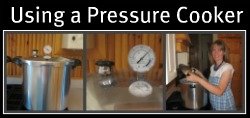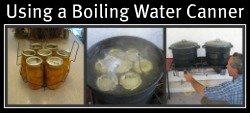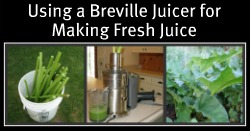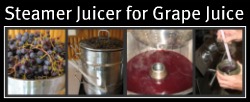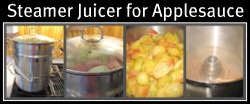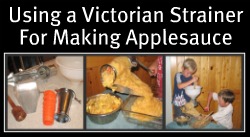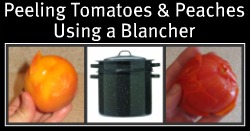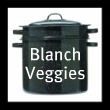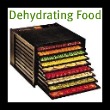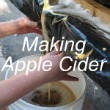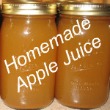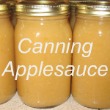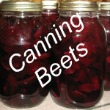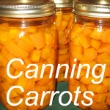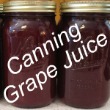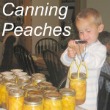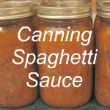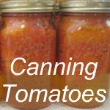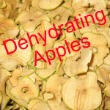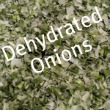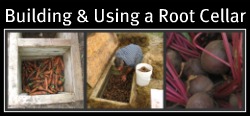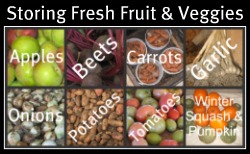Canning Applesauce
Canning applesauce is a great way to preserve your apples for the winter. Sit down together as a family and have a bowl of applesauce, or use the sauce on top of your German puff pancakes, French toast, and Waffles.
You can substitute applesauce in place of oil in many recipes. This saves you money and it’s less fattening if you’re concerned about that kind of stuff.
Learn how to make applesauce with these simple picture book instructions.
Canning Applesauce Supplies and Equipment:

- Fresh Apples – A five-gallon bucket of apples makes 7-8 quarts of applesauce.
- Sugar
- Canning Jars & Lids –
Click here
to learn how to prepare your jars & lids for canning
- Canning Funnel
- Victorian Strainer, food strainer, or Mashing Tool
- Steamer Juicer or Stock Pot
- Boiling Water Canner
Preparing your apples
When making applesauce, use different varieties of apples in the same batch. It gives the applesauce a better flavor. Of course if you only have one apple tree don’t go out and buy another variety of apples.
The first step in making applesauce is cutting up your apples.
Cut the apples into quarters. It’s ok if you leave your seeds and cores in the apples. They’ll be removed when you put your apples through the Victorian strainer. If you’re not using a Victorian strainer, you need to peel and core your apples.
Canning applesauce is a great way to use up those apples that have bad spots. Cut out the bad spots before washing your apples.
Now wash your apples in cold water.
Cooking your apples
The next step is to cook your apples until they are soft. There are two ways to do this.
- When using a stockpot, add just enough water to keep the apples from sticking. Boil the apples until they are soft. You’ll need to continually stir them so they don’t burn. It’s a good idea to use a five-ply stockpot or a pressure canner. This helps to distribute the heat evenly and keep the apples from burning.
- Using a steamer juicer is my favorite way to soften apples when making applesauce. It is so easy.
The steamer juicer has three sections. Fill the bottom section with water and the top strainer with apples.
Put the lid on top and turn the heat on high.
Let the apples steam until they're soft and mushy. Firm apples will not go through the Victorian strainer.
While the apples are steaming, start cutting apples for your next batch.
When the apples are soft, pour them into a bowl and begin steaming your next batch of apples. So easy – No stirring – No burning.
Apple juice will collect in the middle section of the steamer while the apples are getting soft. Pour this apple juice back into a bowl and mix it into your applesauce. Your applesauce will loose a lot of flavor without the juice.
How to use a Victorian Strainer
Here’s a picture of the different pieces that make up a Victorian strainer. There's an apple/tomato screen, spiral cone, pusher, hopper, collection tray, and auger. The orange spiral cone goes inside the screen before you connect the screen to the auger.
Put your soft apples in the hopper, and push the apples into the auger. Turn the crank. The spiral cone moves the food through the strainer. The skins, cores, and seeds come out the end and the applesauce falls into the collection tray. Use a bread pan or casserole dish to catch the applesauce.
Everyone loves to help grind applesauce. It’s one of the children’s favorite canning applesauce jobs.
Dump the applesauce into a big bowl and keep making sauce.
Making applesauce without
a Victorian strainer?
You can use a food mill, meat grinder, or potato masher. Use your imagination. What do you have that will grind up and mash apples?
Mixing the applesauce and filling jars
After the bowl is full, add sugar to the applesauce (¼ cup of sugar for each quart). This keeps the applesauce from getting a metallic taste.
Stir the sauce, juice, and sugar together before putting your applesauce in jars.
After you’re done making your applesauce, use a canning funnel to fill your jars. This keeps the jars from getting messy. Clean off the rims before you put the lids and rings on the jars. Leave ½ inch headspace (Space between the applesauce and top of the jar).
Processing your applesauce
Now it’s time to use a boiling water canner to process your jars of applesauce. Click on these
detailed instructions
if you’re not sure how to use a boiling water canner. Processing times for applesauce are also included on the boiling water page.
After the jars have cooled, check the lids for a seal. Click on these instructions if you don’t know how to
check your lids for a seal.
Make sure to
Earthquake Proof
your storage room.
Canning applesauce made easy!
You’re done!
Return To:
Home Canning from Canning Applesauce
Making Apple Cider
Homemade Apple Juice
Dehydrating Apples
How to Store Fresh Apples
Growing Apple Trees
Pruning Apple Trees
Like this page? Share it. Here's how...
Would you prefer to share this page with others by linking to it?
- Click on the HTML link code below.
- Copy and paste it, adding a note of your own, into your blog, a Web page, forums, a blog comment,
your Facebook account, or anywhere that someone would find this page valuable.







